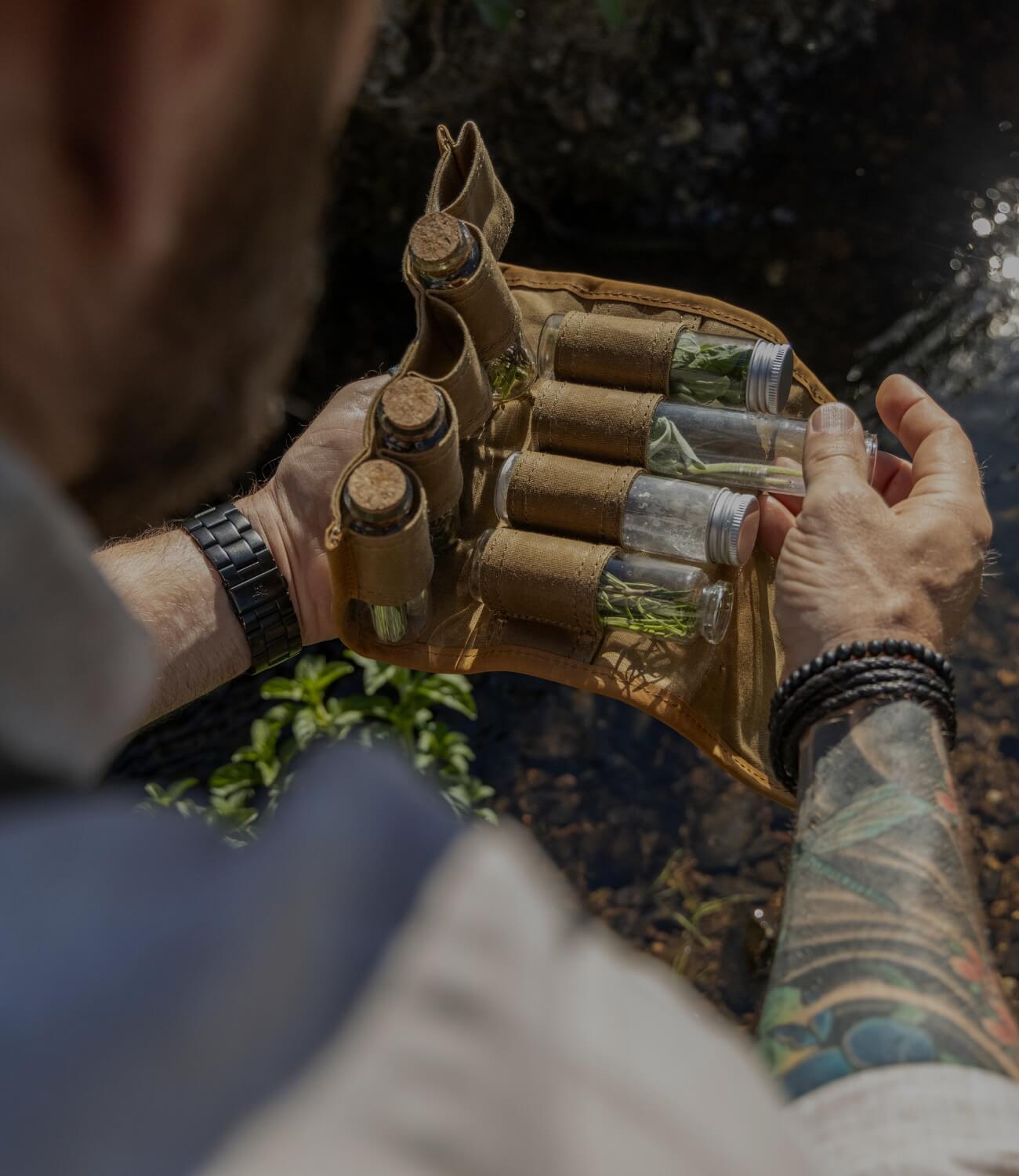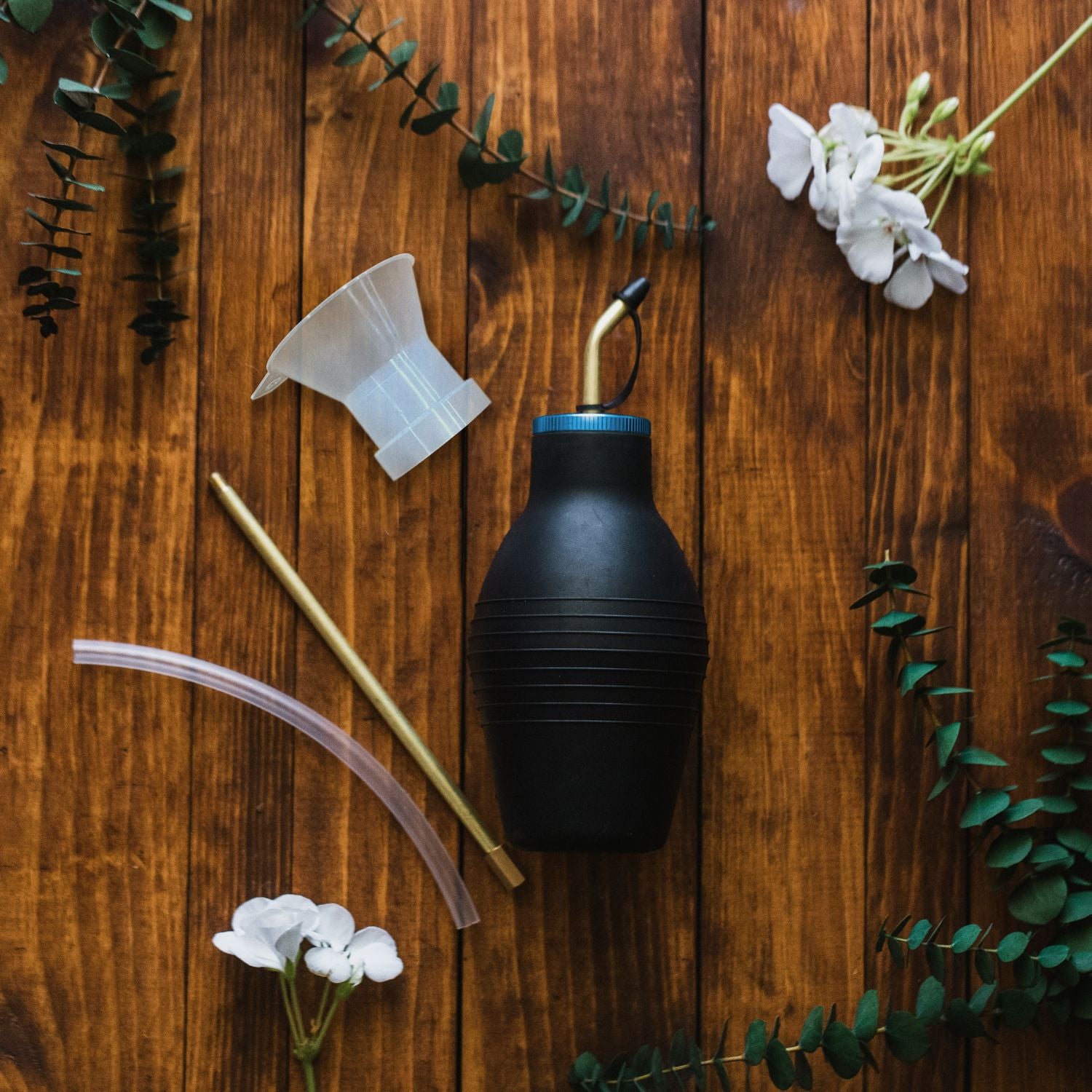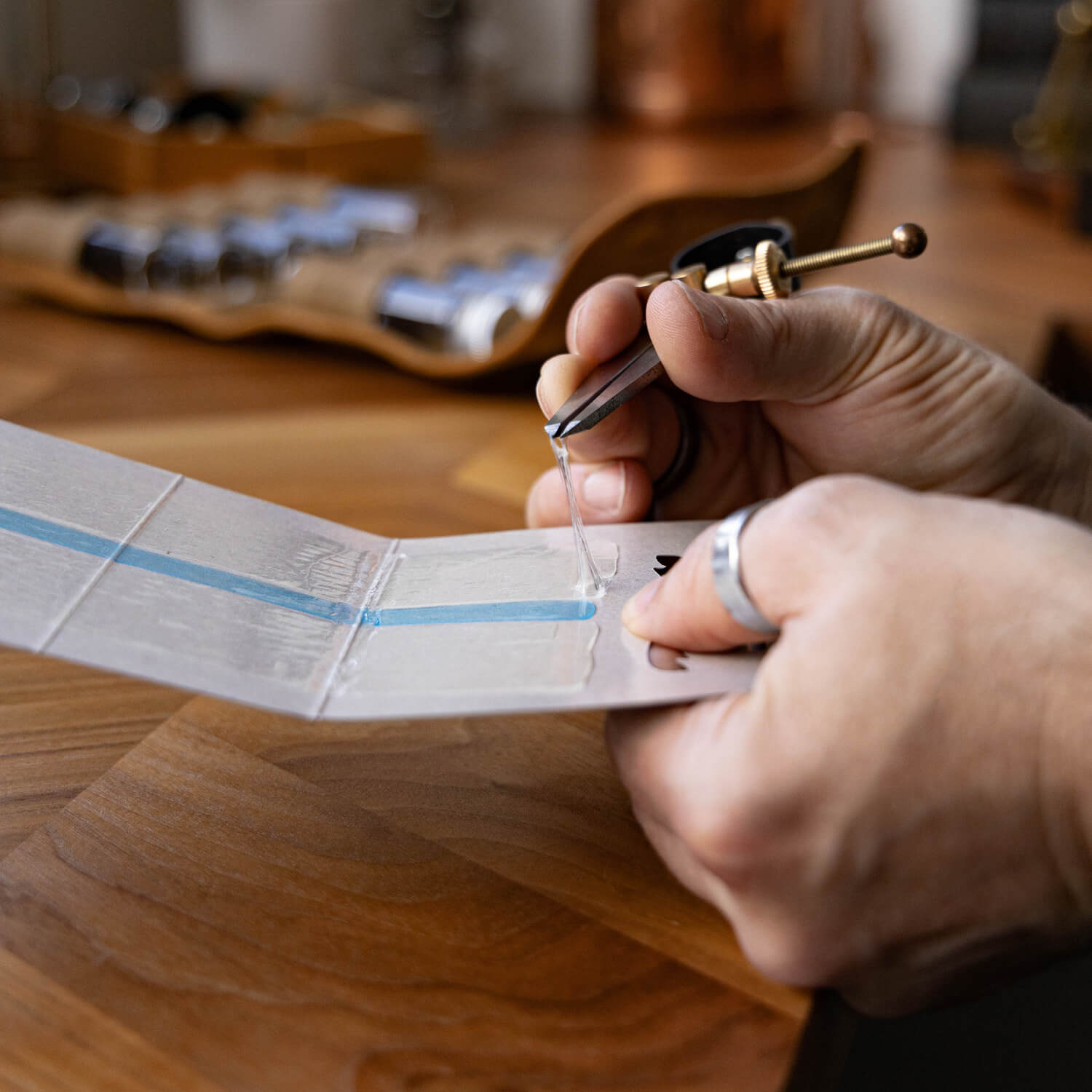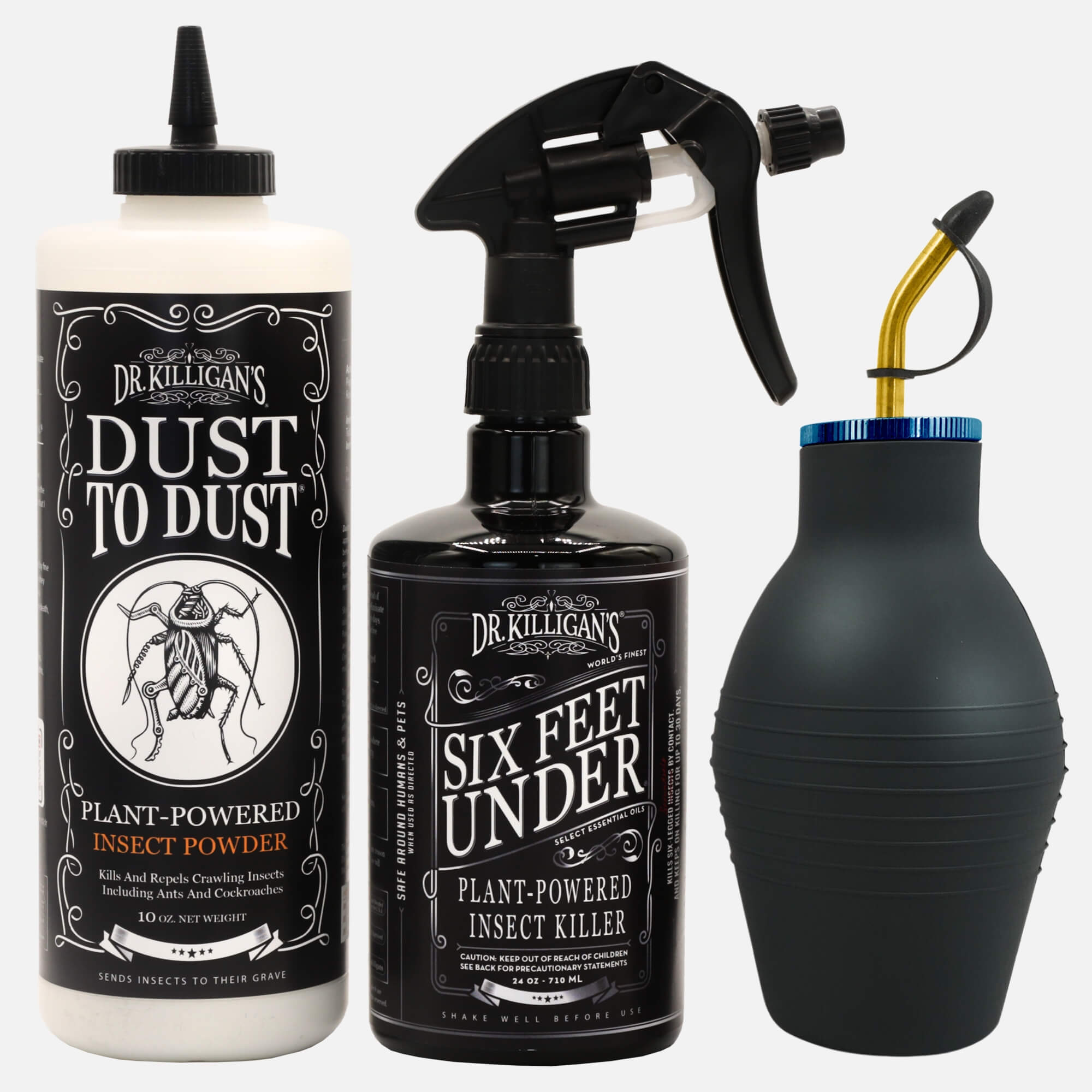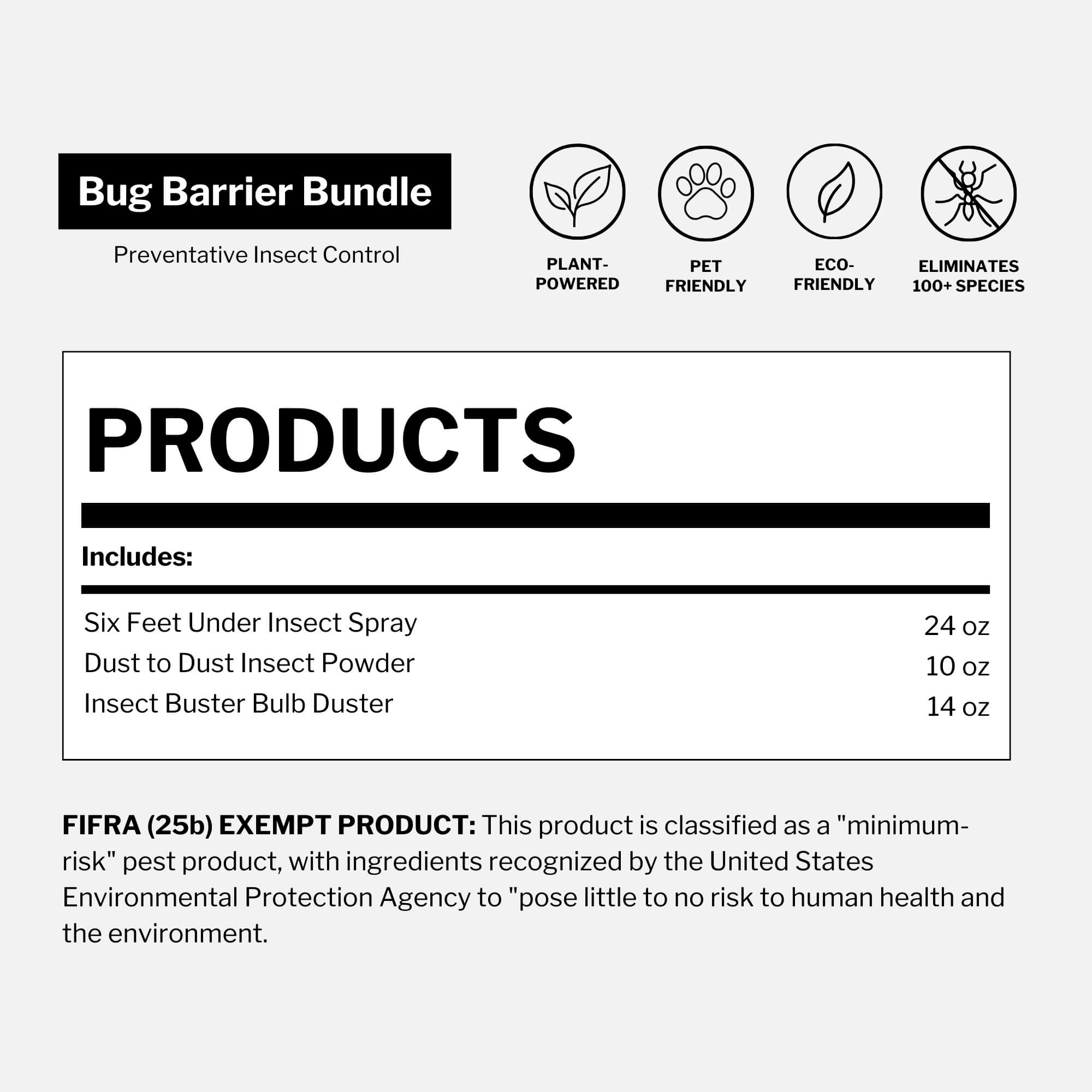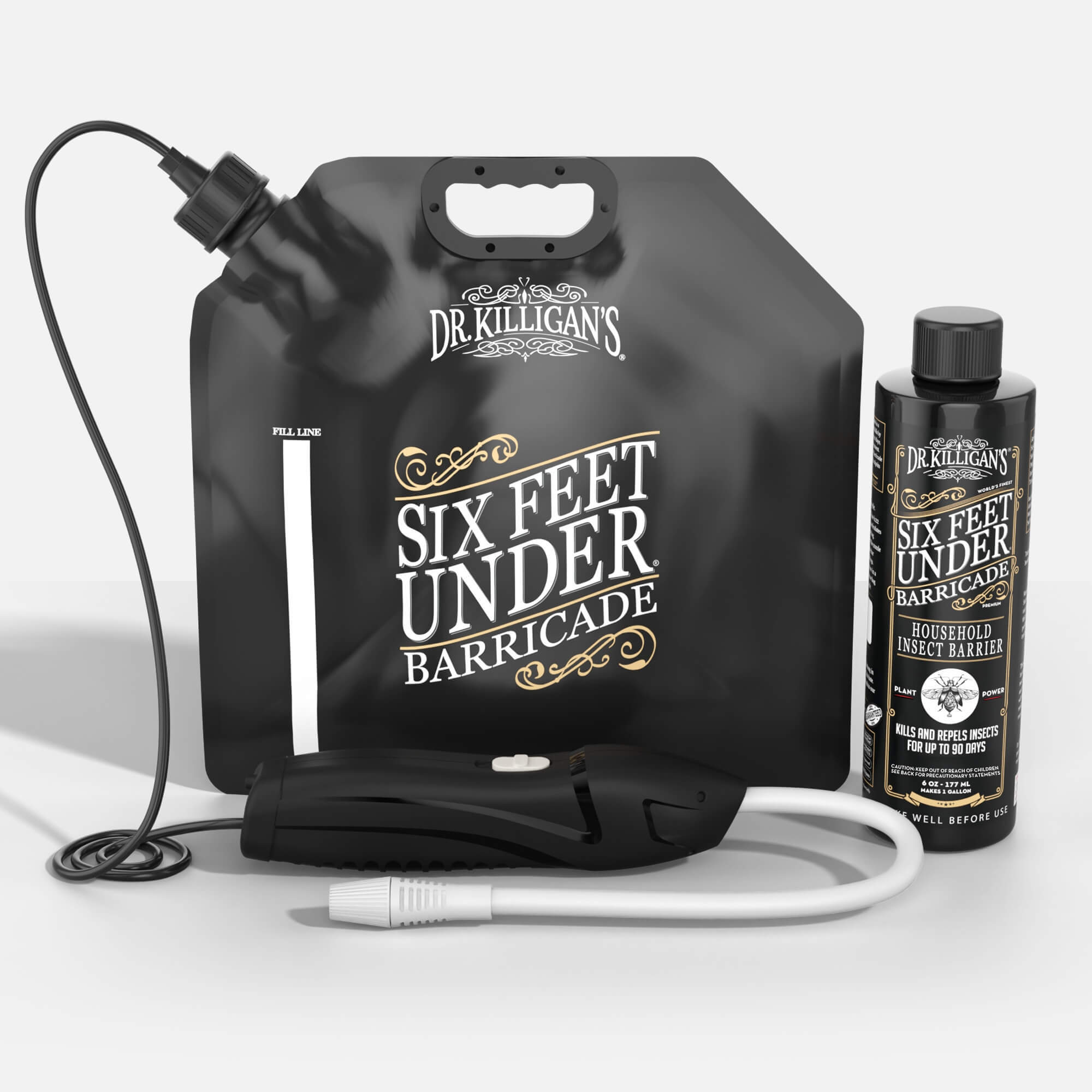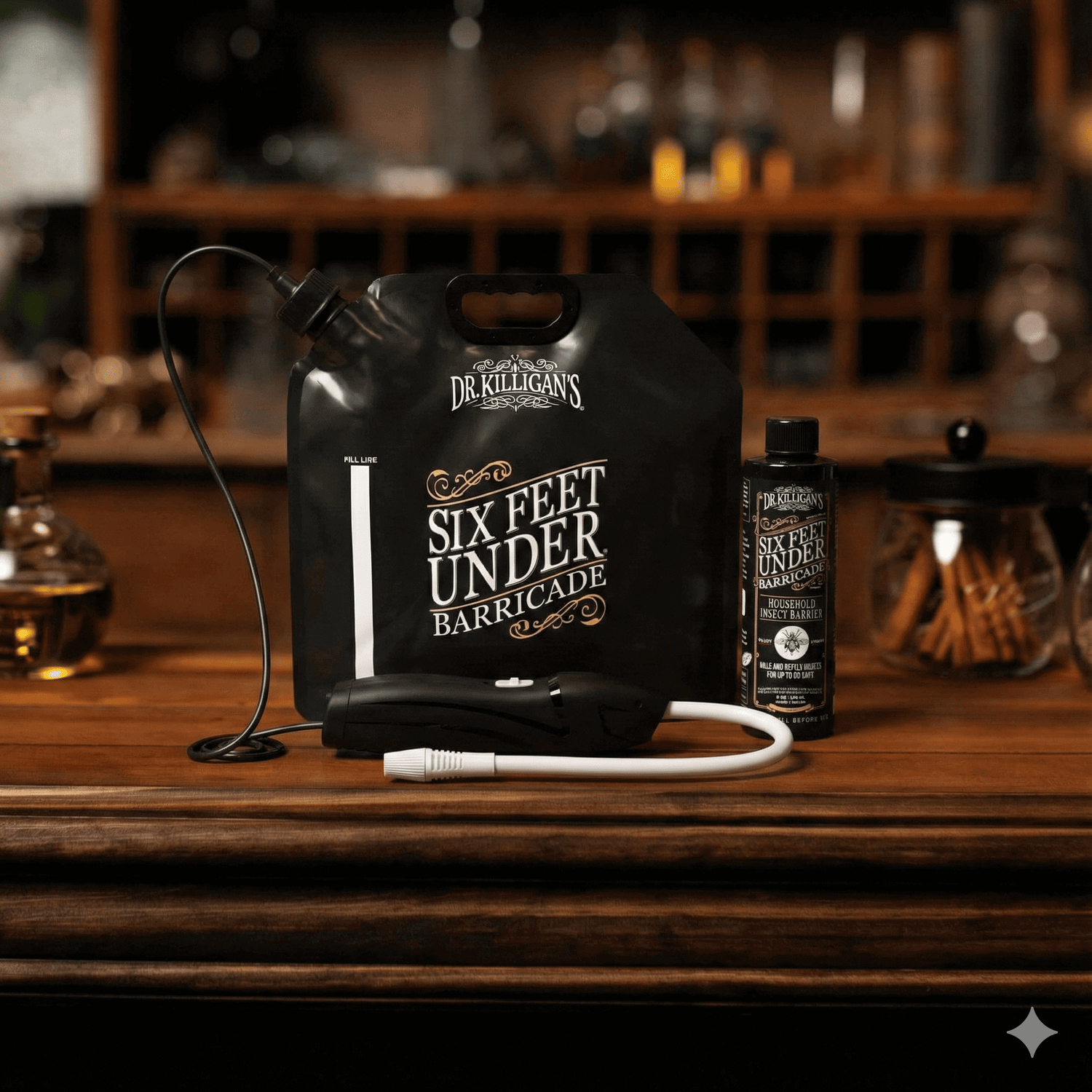



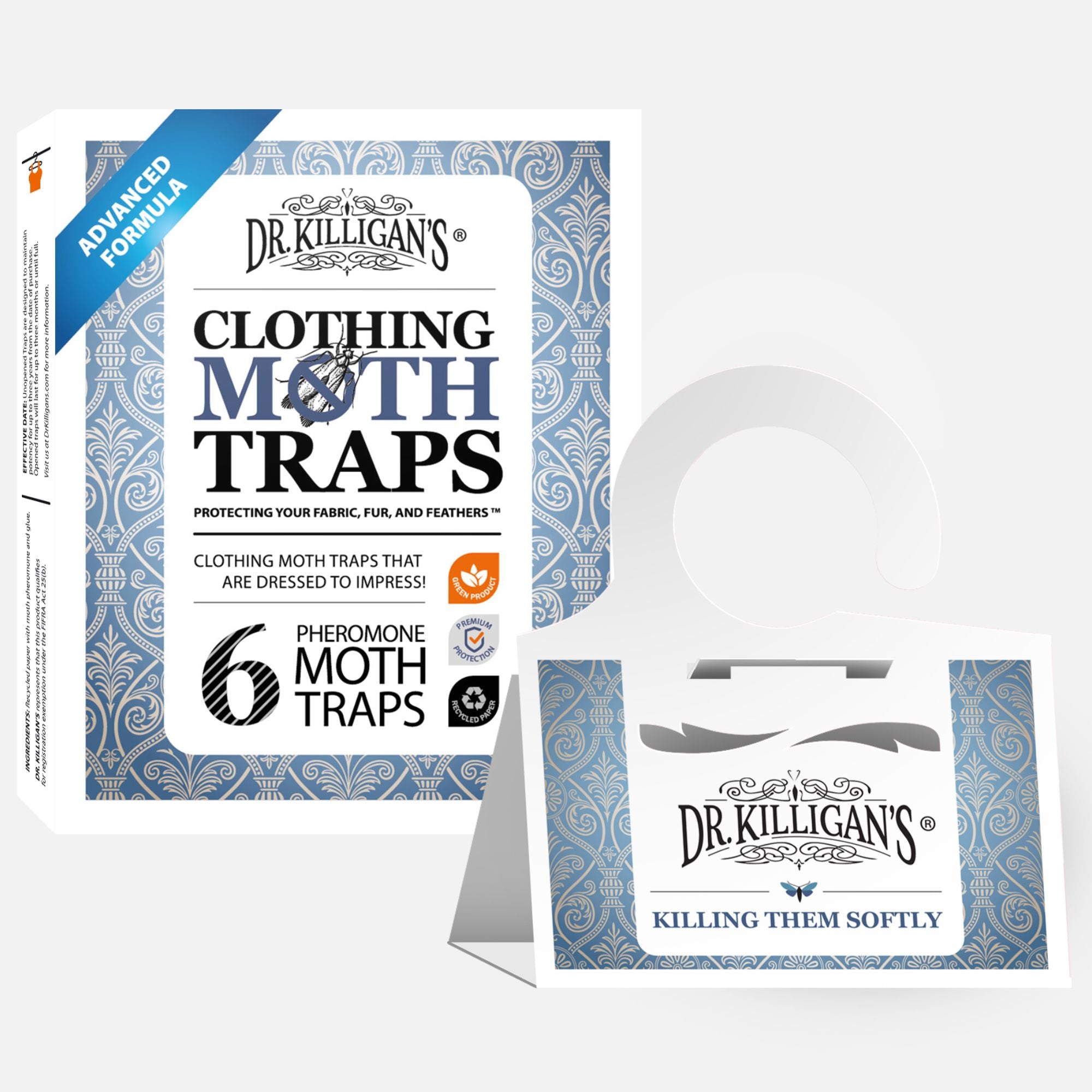




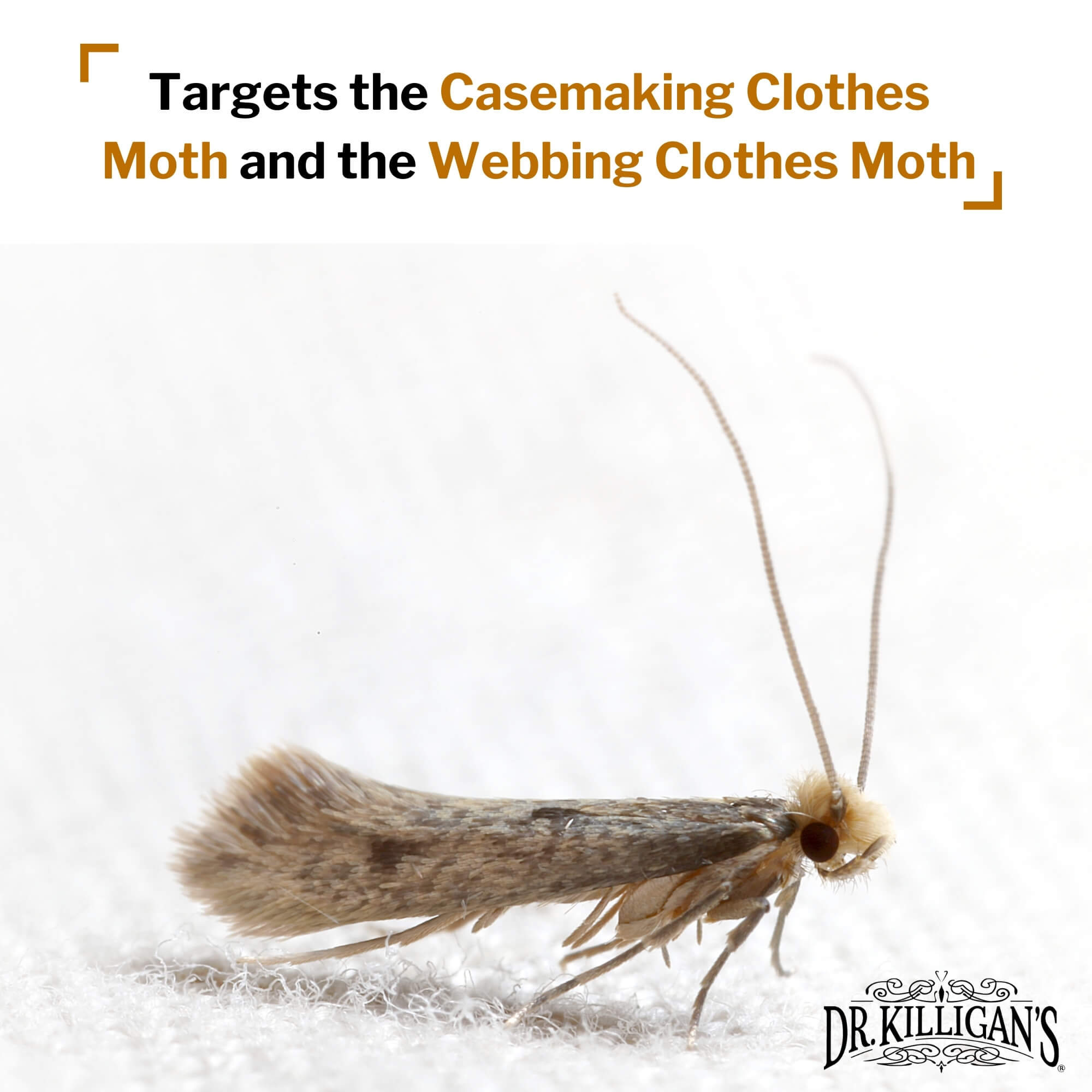
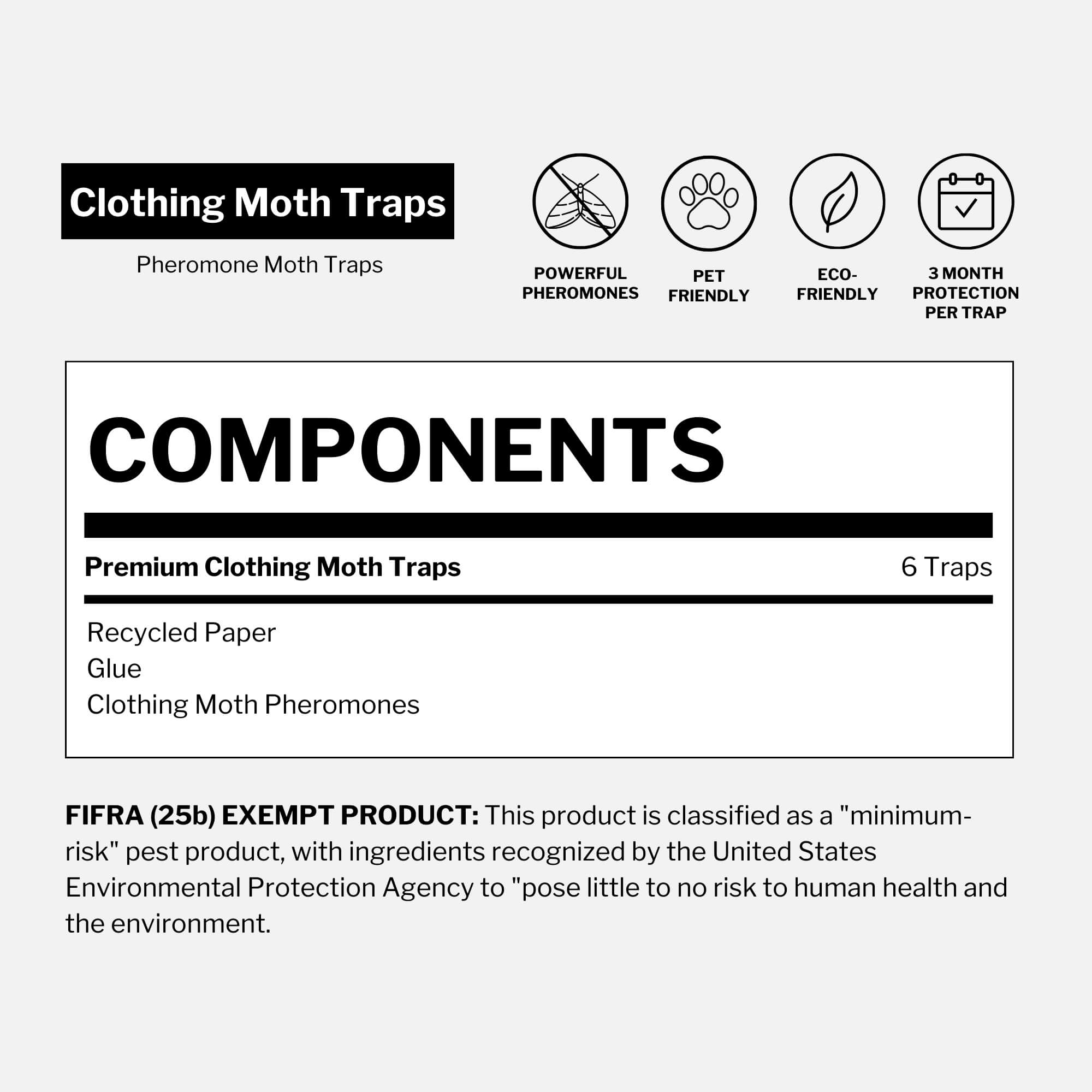

Double Potent Clothing Moth Traps
Ships fast in 3-7 days.
Description
Target insects

Double Potent Clothing Moth Traps
Sale price$24.97
Regular price$24.97 (/)


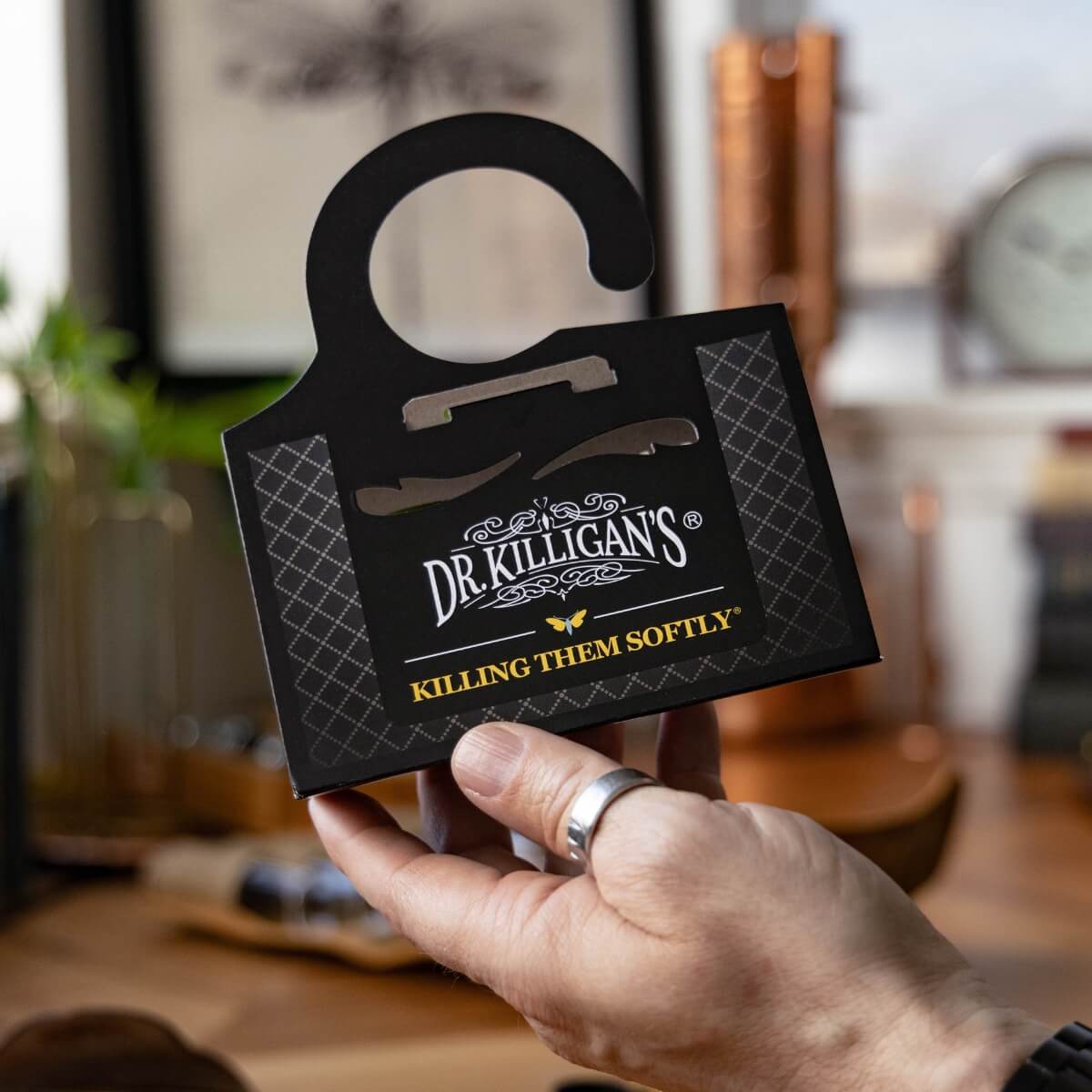



Pest control made easy
It's as simple as 1-2-3.
Prepare
Remove the protective strip and assemble the trap.
Deploy
Hang the trap on closet rods or place on dressers.
Relax
Restore your peace from destructive clothes moths.
Dr. Killigan's vs. Toxic Mothballs

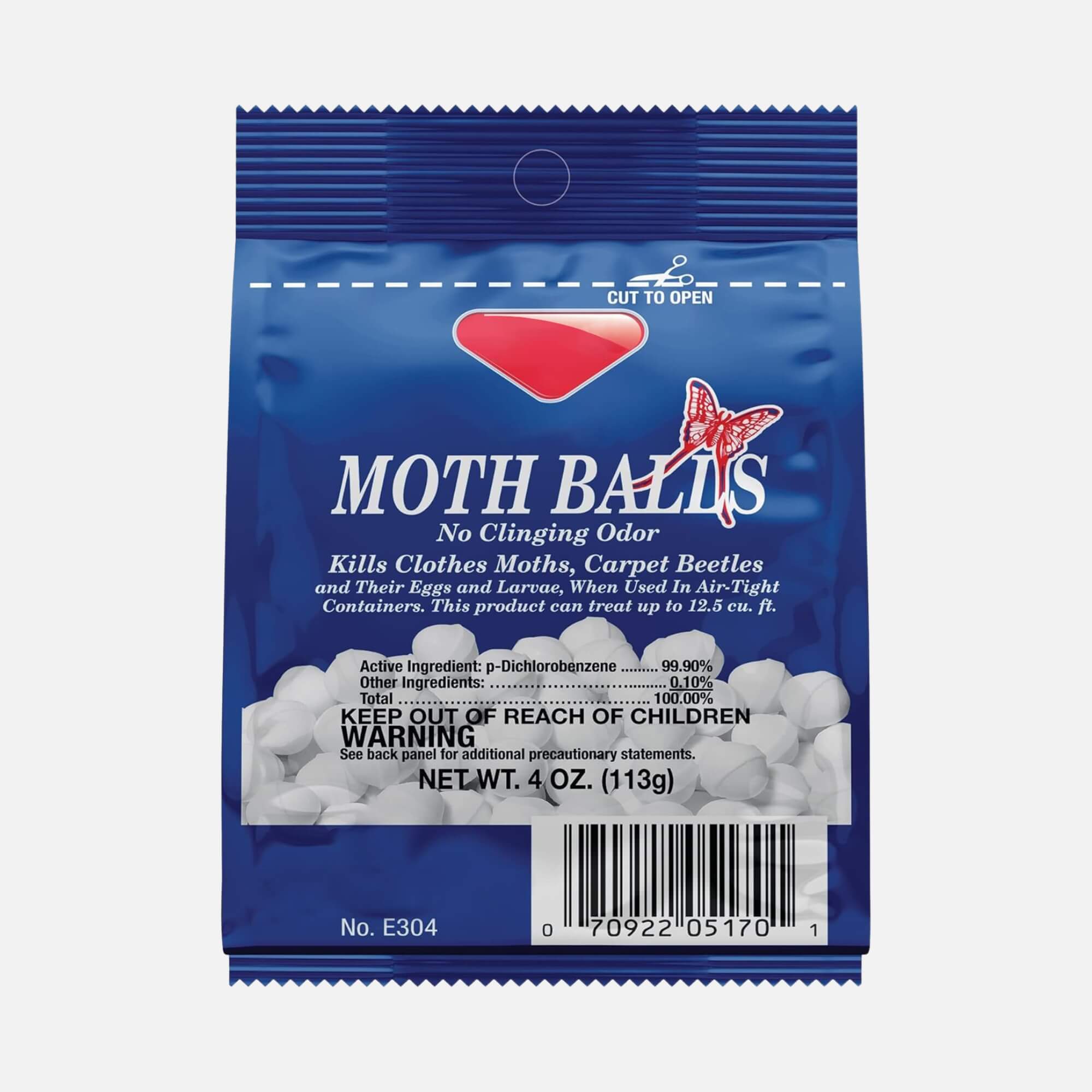
Minimum Risk
Family-Owned
People-Friendly
Pet-Friendly
Planet-Friendly
Transparent Ingredients
No Forever Chemicals
Frequently asked questions
If you don't see the answer to your question, contact us!
Why do moths eat clothes?
How do I prevent clothes moths?
How do I get rid of clothes moths?
How soon will the traps start catching moths?
What do clothes moths and larvae look like?
Related products
Bundle & save
Up to 30% OFF



